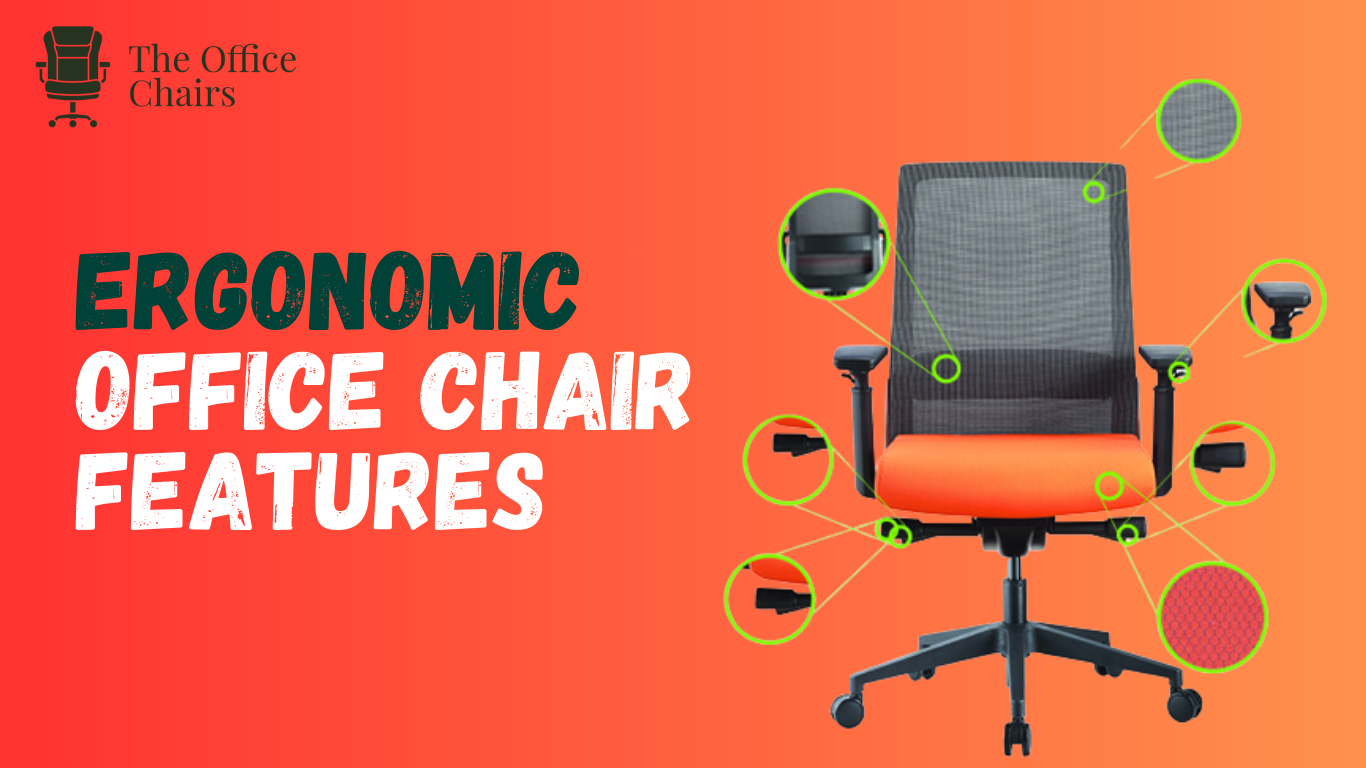Regarding seats, there is no one-size-fits-all approach. Often designed to fit a particular need, ergonomic chairs provide great degrees of adjustment to assist with the current work. This usually incorporates completely adjustable arms, seat height change, lumbar support, adjustable or inflatable, and a clever mechanism to inspire more significant movement throughout your working day. Keep scrolling to know what to look for in an office chair.
What Are The Features of an Office Chairs?
If you have been sitting on an uncomfortable workplace chair eight or more hours a day, your back and other body parts most likely are alerting you. Long work hours call for comfort and support, which Ergonomic Office Chairs are meant to provide. Key elements guarantee correct posture and lower strain using lumbar support, seat height, and movable armrests. Castors and swivel capability provide mobility and simplicity of use. While seat width and depth fit various body sizes, the backrest ergonomic office chair design supports the spine. Suitable seat materials and clever seat pan design improve comfort and lifetime. Safety depends on stability. Hence, the chair must be used constantly. Together, these elements provide a productive and comfortable sitting experience in the office.
1. Armrests
Reducing shoulder and neck tension depends on the armrests on office chairs. They support the arms so users may have a calm posture, whether using a mouse or typing. Particularly helpful are adjustable armrests, as they allow the user to match their height and desired arm posture. Correctly tuned armrests assist in avoiding pain and repeated strain injuries, promoting a better and more pleasant workplace.
2. Seat Height
A decent office chair should feature a pneumatic adjusting lever and be readily changeable in height. A decent office chair should be 16 to 21 inches above the floor. Such height will enable you to keep your feet level on the floor and maintain your thighs parallel to the floor. This height also lets your forearms match the work surface exactly.
3. Swivel
A mainstay of workplace chairs is the swivel functionality, which offers accessibility and simplicity of movement. Users of a swivelling chair may access various desk sections without straying or twisting their bodies. This function improves comfort and productivity because users may quickly turn around and reach their desks, computers, or files. Swivelling also helps natural motions, therefore lowering the chance of musculoskeletal problems.
4. Lumbar Support
Maintaining the inherent curvature of the spine depends on lumbar support in the office chairs. By giving the lumbar area focused support, proper lumbar support helps to lessen back strain and pain. Beneficial are chairs with adjustable lumbar support as they let users match the curvature of the spine. Long-term spinal health promotion and back pain prevention depend on this ability.
5. Backrest
One may have a separate seat or a backrest integrated with the seat. Should the backrest differ from the seat, it must be movable. Additionally, you can make changes to its height and angle. The lumbar segment of your lower back finds support from the height change. Particularly in the area of the lower spine, backrests should ideally be 12 to 19 inches in breadth and meant to support the curvature of your spine. Should the chair be built with a combined backrest and seat, the backrest should be changeable in both forward and reverse orientations. The backrest of such chairs has to be locked to keep it in place after you have chosen a decent posture.
6. Castors
Castors—or wheels- on office chairs—allow seamless and easy mobility over several surfaces. Suitable castors let users move the chair with little effort, enabling quick transitions between jobs. They also help the chair to be sturdy and long-lasting. In dynamic work conditions where mobility is crucial, castors significantly help improve the chair’s usability and functionality.
7. Seat Width And Depth
An office chair’s depth and seat breadth help provide enough support and room. While an expansive seat could not offer enough support, a seat that is too small may be unpleasant. Adjustable seat depth lets customers fit the chair to their leg length, optimising circulation and reducing thigh discomfort. Enough depth and breadth of seats help to enhance general comfort and ergonomics.
8. Seat Material
Solid and long-lasting materials should form a good chair’s basis. Particularly where the lower back touches the chair, it should also be built with enough cushioning on the seat and rear. The best materials are those that breathe and disperse heat and moisture.
9. Seat Pan Characteristics
An office chair’s seat pan is meant to support user weight equally. Office chair features such as a waterfall edge improve circulation and help to relieve thigh tightness. By matching the form of the body, contoured seat pans provide extra comfort and support. Customizing adjustable seat pans helps the user meet their demands, improving general ergonomic support and lowering tiredness.
10. Stability
Office chairs must be stable to guarantee safety and avoid mishaps. A steady chair offers a safe sitting experience, lowering the chance of toppling. Office chair features like a strong base and well-crafted castors help to provide the chair with general stability. Maintaining a safe and efficient workplace depends on the chair being constant during movement and seated.
Conclusion
Selecting the correct office chair is a wise expenditure of your health and welfare. A decent chair should provide you with the support you need to sit comfortably for extended lengths of time without any pain or discomfort. Search for a chair with lumbar support, customizable characteristics, ergonomic office chair design, breathable fabric and cushioning, mobility and swivel elements. The correct office chair will let you work comfortably and effectively for several hours.
FAQ’s (Frequently Asked Questions)
What are the benefits of an office chair?
Through its customisable ergonomic chair features for individual comfort, office chairs improve posture, provide ergonomic support, help alleviate back discomfort, and increase productivity.
Do ergonomic chairs work?
By supporting correct posture and enabling adaptations to match individual demands, ergonomic chairs significantly increase comfort and lower the risk of musculoskeletal problems.
How does seat material affect ergonomic comfort?
Seat materials affect comfort, durability, and breathability. Suitable materials reduce pressure points and provide enough support, therefore improving comfort.
Are ergonomic chairs suitable for all body types?
Indeed, ergonomic chairs include movable elements like seat height, lumbar support, and armrests for individual comfort, allowing different body shapes.

